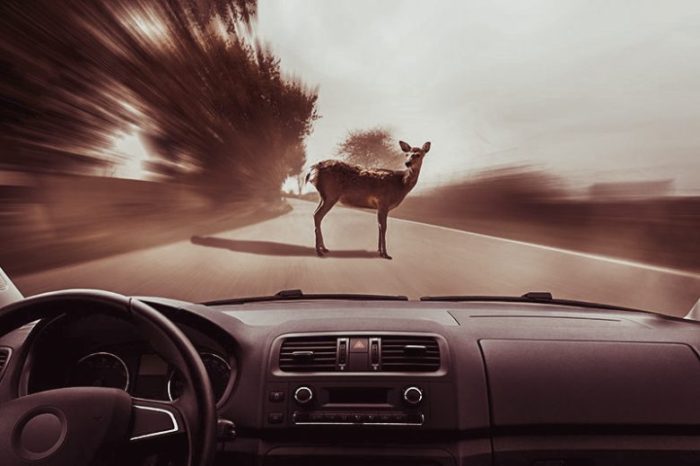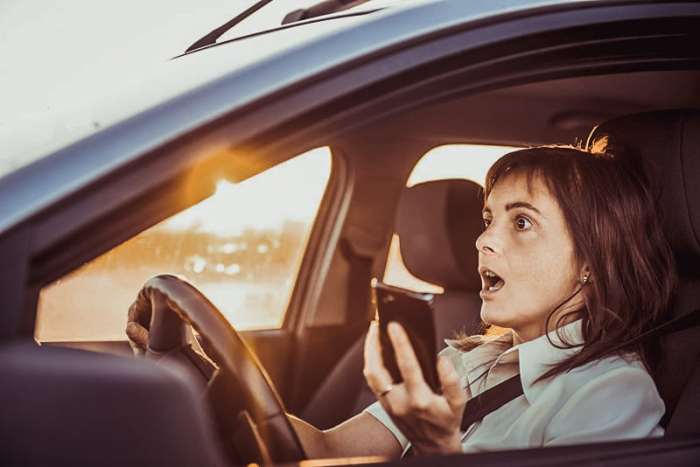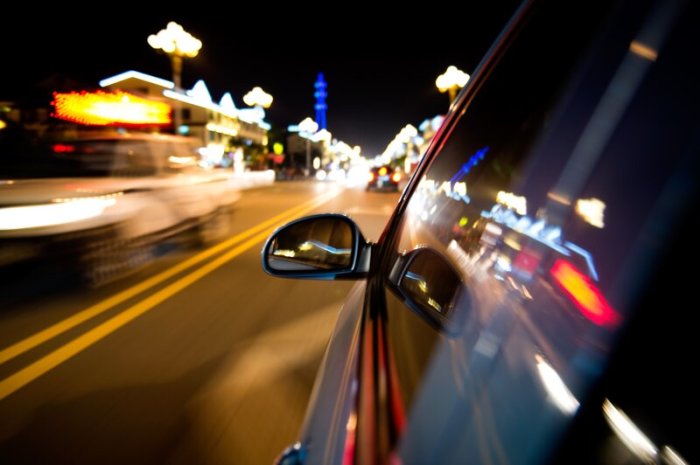Manejar un vehículo de noche es peligroso porque presenta numerosos desafíos y riesgos únicos. La oscuridad reduce la visibilidad, aumenta la fatiga del conductor y crea condiciones de manejo más peligrosas. Este artículo explorará los factores que contribuyen a los peligros de conducir de noche y proporcionará consejos para mantenerse seguro.
Desde problemas de visibilidad hasta el aumento del riesgo de accidentes con animales, conducir de noche requiere una mayor precaución y conciencia. Este artículo analizará estos peligros y ofrecerá estrategias para mitigarlos.
Visibility Issues

Driving at night presents unique visibility challenges that can make it difficult to see pedestrians, cyclists, and other vehicles. Darkness reduces our ability to see objects clearly, especially at a distance. This can lead to accidents if drivers are unable to spot hazards in time.
Impact of Darkness on Depth Perception and Peripheral Vision
Darkness affects our depth perception, making it harder to judge the distance of objects. This can be especially dangerous when driving in unfamiliar areas or on roads with poor lighting. Darkness also narrows our peripheral vision, making it more difficult to see objects to the sides of the road.
Examples of How Poor Visibility Can Lead to Accidents
- A driver may fail to see a pedestrian crossing the road and hit them.
- A driver may not see a cyclist until it is too late to avoid a collision.
- A driver may not notice a parked car until they are right upon it, leading to a rear-end collision.
Driver Fatigue and Impairment: Manejar Un Vehículo De Noche Es Peligroso Porque

Driving at night increases the risk of driver fatigue. Darkness can make it more difficult to stay alert and focused, and the monotony of driving in the dark can lead to drowsiness. Driver fatigue can impair reaction time, judgment, and decision-making, increasing the risk of accidents.
How Darkness Affects Alertness and Reaction Time
Darkness reduces the amount of light entering our eyes, which can make us feel tired. The body’s natural circadian rhythm also makes us more likely to feel sleepy at night. As a result, drivers may have slower reaction times and difficulty concentrating when driving at night.
Dangers of Driving Under the Influence of Alcohol or Drugs at Night
Driving under the influence of alcohol or drugs at night is especially dangerous. Alcohol and drugs impair judgment, coordination, and reaction time, which can be even more pronounced in the dark. Drivers who are under the influence are more likely to be involved in accidents, including fatal crashes.
Animal Hazards
Animal-vehicle collisions are more common at night. Animals are often more active at night, and their dark coloration can make them difficult to see. Deer, for example, are particularly active at dawn and dusk, and they can be difficult to spot in the headlights of a car.
Why Animals Are More Active at Night
Many animals are nocturnal, meaning they are active at night. This is because they are able to avoid predators and find food more easily in the dark. Some animals, such as deer, are also crepuscular, meaning they are active at dawn and dusk.
Potential Consequences of Hitting an Animal While Driving at Night, Manejar un vehículo de noche es peligroso porque
Hitting an animal while driving at night can be dangerous. Animals can be large and heavy, and they can cause significant damage to a vehicle. In some cases, animal-vehicle collisions can even be fatal.
Road Conditions

Darkness can make it difficult to see road hazards, such as potholes, debris, and uneven surfaces. This can increase the risk of accidents, especially if drivers are not familiar with the road.
How Darkness Can Make It Harder to See Road Hazards
Darkness reduces our ability to see objects clearly, especially at a distance. This can make it difficult to spot road hazards until it is too late to avoid them. Additionally, darkness can create shadows that can hide objects from view.
Increased Risk of Hydroplaning and Black Ice at Night
Darkness increases the risk of hydroplaning and black ice. Hydroplaning occurs when a vehicle’s tires lose contact with the road surface due to a layer of water. Black ice is a thin layer of ice that can form on roads at night, even when the temperature is above freezing.
Headlights and Lighting

Using headlights and taillights at night is essential for visibility. Headlights allow drivers to see the road ahead, and taillights make it easier for other drivers to see your vehicle.
Importance of Using Headlights and Taillights at Night
Headlights and taillights are required by law in most countries. They help to improve visibility and reduce the risk of accidents. Headlights allow drivers to see the road ahead, and taillights make it easier for other drivers to see your vehicle.
Different Types of Headlights Available and Their Effectiveness
There are several different types of headlights available, including halogen, HID, and LED headlights. Halogen headlights are the most common type, and they produce a yellow light. HID headlights produce a brighter, whiter light, and they are more energy-efficient than halogen headlights.
LED headlights are the most expensive type, but they produce the brightest and most energy-efficient light.
Tips for Adjusting Headlights Properly to Maximize Visibility
Headlights should be adjusted properly to maximize visibility. Headlights that are too low will not provide enough light, and headlights that are too high can blind other drivers. Most vehicles have a headlight adjustment knob that can be used to adjust the headlights.
Other Factors
Role of Weather Conditions in Nighttime Driving Hazards
Weather conditions can make driving at night even more hazardous. Rain, fog, and snow can reduce visibility and make it difficult to see road hazards. In addition, wet or icy roads can increase the risk of accidents.
Impact of Distractions on Nighttime Driving
Distractions can be a major problem when driving at night. Cell phones, other electronic devices, and even passengers can all distract drivers from the road. Distracted drivers are more likely to be involved in accidents.
Additional Tips for Staying Safe While Driving at Night
- Get plenty of rest before driving at night.
- Avoid driving under the influence of alcohol or drugs.
- Be aware of your surroundings and scan the road ahead for potential hazards.
- Use your headlights and taillights at all times when driving at night.
- Slow down and be prepared to stop if you see an animal or other hazard in the road.
Question & Answer Hub
¿Por qué es más peligroso conducir de noche?
Conducir de noche es más peligroso debido a la visibilidad reducida, la mayor fatiga del conductor y el aumento del riesgo de accidentes con animales.
¿Cómo puedo mejorar mi visibilidad al conducir de noche?
Utilice siempre los faros y las luces traseras, ajuste los faros correctamente para maximizar la visibilidad y evite las distracciones.
¿Qué debo hacer si me encuentro con un animal en la carretera de noche?
Reduzca la velocidad, toque la bocina y esté preparado para detenerse. Evite girar bruscamente, ya que esto podría provocar un accidente.